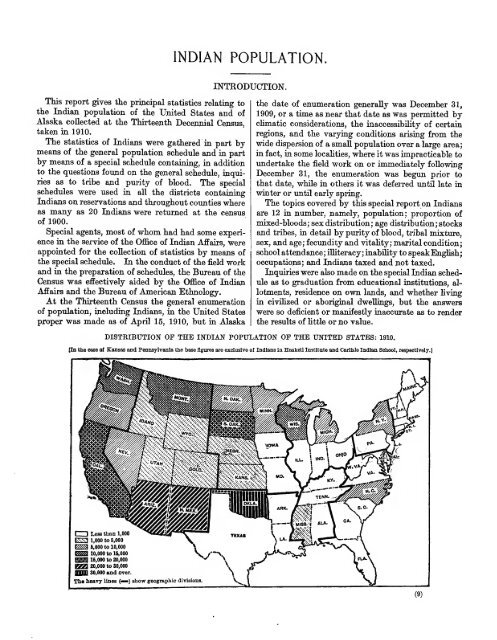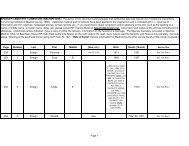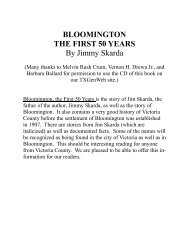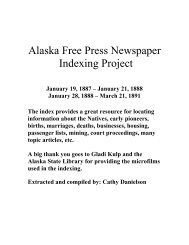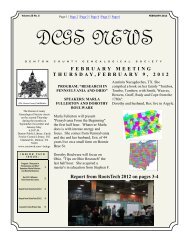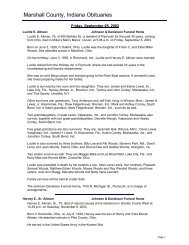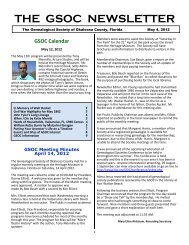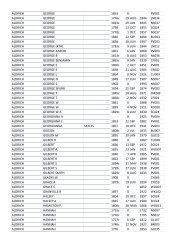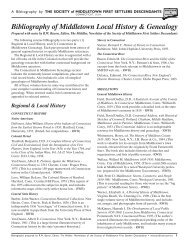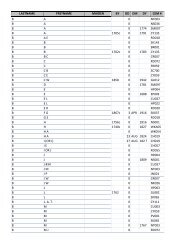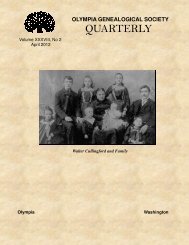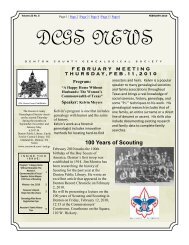Indian population in the United States and Alaska. 1910 - RootsWeb
Indian population in the United States and Alaska. 1910 - RootsWeb
Indian population in the United States and Alaska. 1910 - RootsWeb
Create successful ePaper yourself
Turn your PDF publications into a flip-book with our unique Google optimized e-Paper software.
This report gives <strong>the</strong> pr<strong>in</strong>cipal statistics relat<strong>in</strong>g to<br />
<strong>the</strong> <strong>Indian</strong> <strong>population</strong> of <strong>the</strong> <strong>United</strong> <strong>States</strong> <strong>and</strong> of<br />
<strong>Alaska</strong> collected at <strong>the</strong> Thirteenth Decennial Census,<br />
taken <strong>in</strong> <strong>1910</strong>.<br />
The statistics of <strong>Indian</strong>s were ga<strong>the</strong>red <strong>in</strong> part by<br />
means of <strong>the</strong> general <strong>population</strong> schedule <strong>and</strong> <strong>in</strong> part<br />
by means of a special schedule contaia<strong>in</strong>g, <strong>in</strong> addition<br />
to <strong>the</strong> questions found on <strong>the</strong> general schedule, iaqui-<br />
ries as to tribe <strong>and</strong> purity of blood. The special<br />
schedules were used <strong>in</strong> all <strong>the</strong> districts conta<strong>in</strong><strong>in</strong>g<br />
<strong>Indian</strong>s on reservations <strong>and</strong> throughout counties where<br />
as many as 20 <strong>Indian</strong>s were returned at <strong>the</strong> census<br />
of 1900.<br />
Special agents, most of whom had had some experience<br />
<strong>in</strong> <strong>the</strong> service of <strong>the</strong> Office of <strong>Indian</strong> Affairs, were<br />
appo<strong>in</strong>ted for <strong>the</strong> collection of statistics by means of<br />
<strong>the</strong> special schedule. In <strong>the</strong> conduct of <strong>the</strong> field work<br />
<strong>and</strong> <strong>in</strong> <strong>the</strong> preparation of schedules, <strong>the</strong> Bureau of <strong>the</strong><br />
Census was effectively aided by <strong>the</strong> Office of <strong>Indian</strong><br />
Affairs <strong>and</strong> <strong>the</strong> Bureau of American Ethnology.<br />
At <strong>the</strong> Thirteenth Census <strong>the</strong> general enumeration<br />
of <strong>population</strong>, <strong>in</strong>clud<strong>in</strong>g <strong>Indian</strong>s, <strong>in</strong> <strong>the</strong> <strong>United</strong> <strong>States</strong><br />
pjfoper was made as of April 15, <strong>1910</strong>, but <strong>in</strong> <strong>Alaska</strong><br />
INDIAN POPULATION.<br />
INTRODUCTION.<br />
<strong>the</strong> date of enumeration generally was December 31,<br />
1909, or a time as near that date as was permitted by<br />
chmatic considerations, <strong>the</strong> <strong>in</strong>accessibility of certa<strong>in</strong><br />
regions, <strong>and</strong> <strong>the</strong> vary<strong>in</strong>g conditions aris<strong>in</strong>g from <strong>the</strong><br />
wide dispersion of a small <strong>population</strong> over a large area;<br />
<strong>in</strong> fact, <strong>in</strong> some localities, where it was impracticable to<br />
undertake <strong>the</strong> field work on or immediately follow<strong>in</strong>g<br />
December 31, <strong>the</strong> enumeration was begun prior to<br />
that date, while <strong>in</strong> o<strong>the</strong>rs it was deferred until late <strong>in</strong><br />
w<strong>in</strong>ter or until early spr<strong>in</strong>g.<br />
The topics covered by this special report on <strong>Indian</strong>s<br />
are 12 <strong>in</strong> number, namely, <strong>population</strong>; proportion of<br />
mixed-bloods; sex distribution; age distribution; stocks<br />
<strong>and</strong> tribes, <strong>in</strong> detail by purity of blood, tribal mixture,<br />
sex, <strong>and</strong> age; fecimdity <strong>and</strong> vitahty; marital condition;<br />
school attendance; iUiteracy; <strong>in</strong>ability to speak English;<br />
occupations; <strong>and</strong> <strong>Indian</strong>s taxed <strong>and</strong> not taxed.<br />
Inquiries were also made on <strong>the</strong> special <strong>Indian</strong> sched-<br />
ule as to graduation from educational <strong>in</strong>stitutions, al-<br />
lotments, residence on own l<strong>and</strong>s, <strong>and</strong> whe<strong>the</strong>r liv<strong>in</strong>g<br />
<strong>in</strong> civilized or aborig<strong>in</strong>al dwell<strong>in</strong>gs, but <strong>the</strong> answers<br />
were so deficient or manifestly <strong>in</strong>accurate as to render<br />
<strong>the</strong> results of Httle or no value.<br />
DISTRIBUTION OF THE INDIAN POPULATION OF THE UNITED STATES: <strong>1910</strong>.<br />
(In <strong>the</strong> case of Kansas <strong>and</strong> Pennsylvania tbs base figures are exclusive of <strong>Indian</strong>s <strong>in</strong> Haskell Institute <strong>and</strong> Carlisle <strong>Indian</strong> School, lespectively.]


